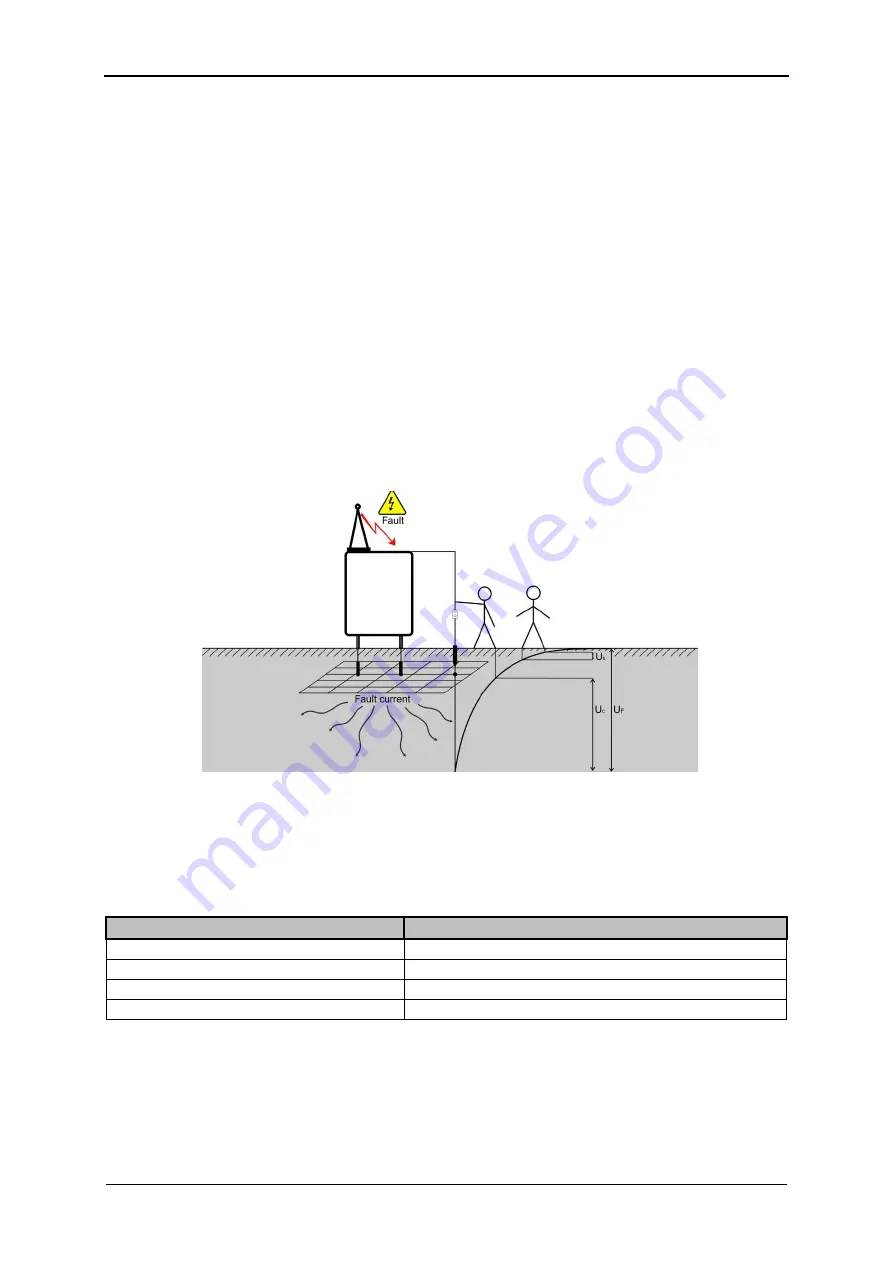
MI 3290 Earth Analyser
Tests and Measurements
101
11.7 Earth Potential [Us]
An earthing electrode / grid deployed into ground have a certain resistance, depending on its
size, surface (oxides on the metal surface) and the soil resistivity around the electrode. The
earthing resistance is not concentrated in one point but is distributed around the electrode.
Correct earthing of exposed conductive parts assures that the voltage on them stays below
dangerous level in case of a fault.
If a fault happens a fault current will flow through the earthing electrode. A typical voltage
distribution occurs around the electrode (the “voltage funnel”). The largest part of the voltage
drop is concentrated around the earth electrode.
contact voltages occur as a result of fault currents flowing through the earthing electrode /
grid in the ground.
Fault currents close to power distribution objects (substations, distribution towers, plants) can
be very high, up to 200 kA. This can result in dangerous step and contact voltages. If there
are underground metal connections (intended or unknown) the voltage funnel can get
atypical forms and high voltages can occur far from the point of failure. Therefore, the voltage
distribution in case of a fault around these objects must be carefully analysed.
In the example below step and touch voltage are illustrated:
Figure 11.65: Dangerous voltages on a faulty earthing system
where:
U
S
..................................... Step Voltage in case of a fault current
U
C
..................................... Contact or Touch Voltage in case of a fault current
U
F
..................................... Fault voltage
Standard IEC 61140 defines following maximum allowed time / contact voltage relations:
Maximum time of exposure
Voltage
>5 s to ∞
UC
50 VAC or
120 VDC
0,4 s
UC
115 VAC or
180 VDC
< 0,2 s
UC
200 VAC
< 0,04 s
UC
250 VAC
Table 11.66: Maximum time durations vs fault voltage
For a longer exposure, the touch voltages must stay below 50 V.






























